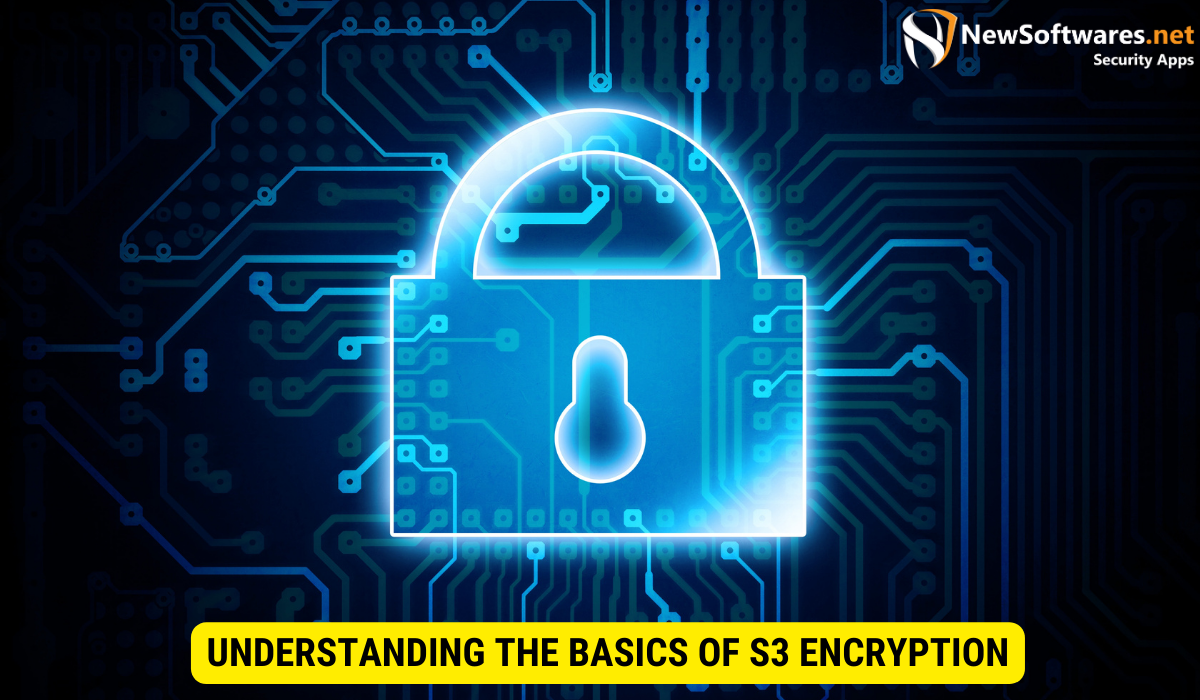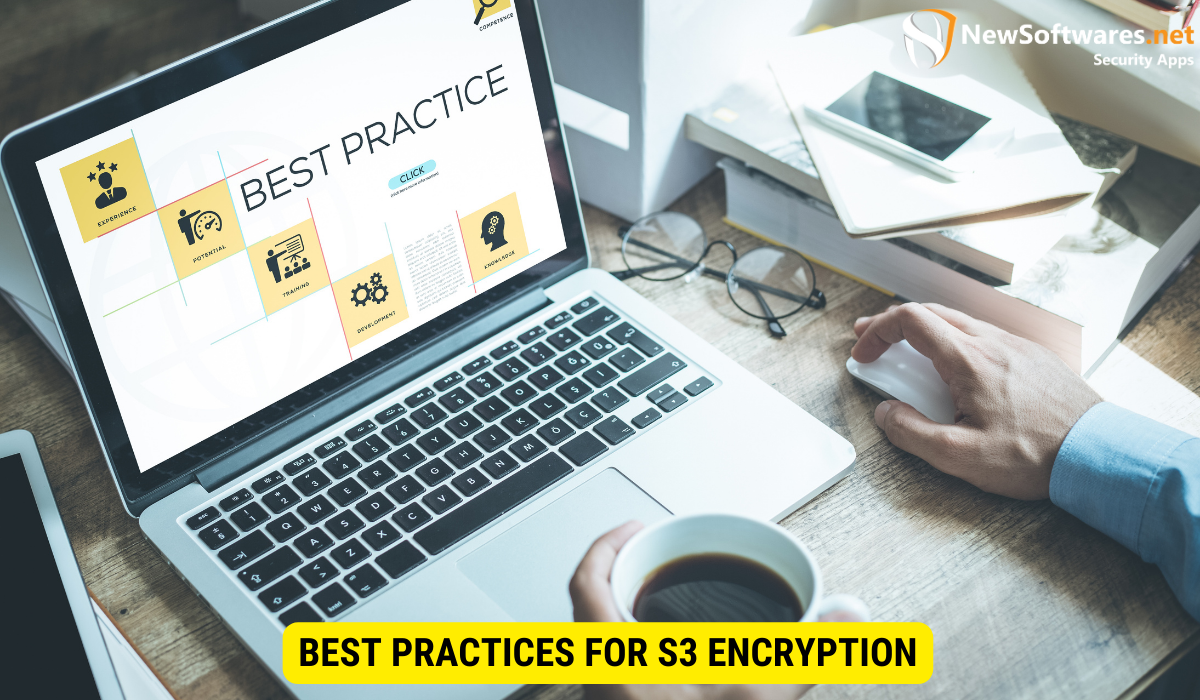S3 encryption, offered by Amazon Simple Storage Service (S3), safeguards data by encoding it with cryptographic algorithms, making it unreadable without the decryption keys. There are two types: server-side encryption (handled by AWS) and client-side encryption (user-managed). It’s vital for data security, aids in compliance with privacy laws like GDPR, and best practices include choosing the right encryption method and effective key management.
In today’s digital age, data privacy and security have become critical concerns for businesses and individuals alike. One of the key components in ensuring data security is encryption. Together, we will explore the intricacies of S3 encryption and understand how it safeguards your data.
Understanding the Basics of S3 Encryption

Before diving into the details of S3 encryption, it is essential to grasp the concept of what S3 encryption is all about. S3 encryption is a feature offered by Amazon Simple Storage Service (S3) that allows you to encrypt your data at rest. In other words, it ensures that your stored data is secure and protected against unauthorized access.
When it comes to protecting sensitive data, encryption plays a crucial role. Encryption involves encoding your data using cryptographic algorithms, making it unreadable without the appropriate decryption keys. This ensures that even if an attacker gains access to your stored data, they won’t be able to decipher its contents.
S3 provides scalable and efficient encryption mechanisms that ensure the confidentiality and integrity of your data. By encrypting your data, you add an extra layer of protection to your sensitive information, reducing the risk of unauthorized access, theft, and data breaches.
What is S3 Encryption?
S3 encryption, as mentioned earlier, involves encoding your data using cryptographic algorithms. But how does it work exactly? When you upload an object to S3, you have the option to enable encryption. S3 offers two types of encryption: server-side encryption and client-side encryption.
Server-side encryption means that Amazon S3 handles the encryption and decryption process for you. It provides three different options for server-side encryption: Amazon S3 managed keys (SSE-S3), AWS Key Management Service (SSE-KMS), and customer-provided keys (SSE-C). Each option offers different levels of control and management over your encryption keys.
On the other hand, client-side encryption gives you full control over the encryption and decryption process. You encrypt the data on your end before uploading it to S3, and you decrypt it when retrieving the data. This approach allows you to manage the encryption keys entirely on your own, giving you maximum control and security.
Importance of Data Encryption
Data encryption is crucial because it adds an extra layer of protection to your sensitive information. It helps safeguard your data from unauthorized access, theft, and data breaches. By encrypting your data, you reduce the risk of exposing sensitive information to malicious actors, thereby maintaining the trust of your customers and partners.
In addition to protecting your data from external threats, encryption also helps you comply with various data protection regulations and industry standards. Many regulatory frameworks, such as the General Data Protection Regulation (GDPR), require organizations to implement appropriate security measures, including data encryption, to protect personal data.
Furthermore, encryption can also protect your data during transit. When transferring data between different systems or over the internet, encryption ensures that the data remains secure and confidential. This is especially important when dealing with sensitive information, such as financial records, medical records, or intellectual property.
Overall, data encryption is a critical component of any comprehensive security strategy. It provides peace of mind, knowing that your data is protected and that you are taking proactive steps to mitigate the risks associated with data breaches and unauthorized access.
The Process of S3 Encryption
Now that we understand the importance of data encryption, let’s delve into the process of S3 encryption. There are two primary components: key management and encryption mechanisms.
Key Management in S3 Encryption
Key management is a critical aspect of S3 encryption. S3 allows you to manage your encryption keys either manually or through AWS Key Management Service (KMS). With manual key management, you have full control over your encryption keys, while AWS KMS offers a managed service for encryption key generation, storage, and access control.
When using manual key management, you can generate your own encryption keys using cryptographic algorithms such as Advanced Encryption Standard (AES). This gives you complete control over the security of your keys and allows you to customize the encryption process according to your specific requirements.
On the other hand, AWS KMS provides a convenient and secure way to manage encryption keys. It simplifies the key generation process and ensures that your keys are stored securely. AWS KMS also offers features such as key rotation and access control policies, allowing you to easily manage and monitor your encryption keys.
Regardless of the key management method you choose, it is important to follow best practices for key management, such as regularly rotating your keys, using strong and unique keys for each encryption operation, and implementing strict access controls to protect your keys from unauthorized access.
Encryption Mechanisms Used by S3
S3 offers various encryption mechanisms to suit different use cases. The two main types of S3 encryption are server-side encryption and client-side encryption.
Server-side encryption is the default encryption method provided by S3. When you upload an object to S3, the data is automatically encrypted using server-side encryption. S3 offers three options for server-side encryption: Amazon S3 managed keys (SSE-S3), AWS Key Management Service (SSE-KMS), and customer-provided keys (SSE-C). SSE-S3 and SSE-KMS are managed by AWS, while SSE-C allows you to provide your own encryption keys.
Client-side encryption, on the other hand, involves encrypting the data on the client side before it is uploaded to S3. This gives you full control over the encryption process and allows you to use your own encryption libraries or algorithms. With client-side encryption, the encryption keys are never sent to or stored by AWS, ensuring that only you have access to the decrypted data.
It is important to note that regardless of the encryption mechanism you choose, S3 ensures that your data is encrypted at rest. This means that even if someone gains unauthorized access to the underlying storage infrastructure, they will not be able to access your data without the encryption keys.
In conclusion, the process of S3 encryption involves key management and encryption mechanisms. Key management can be done manually or through AWS KMS, while encryption mechanisms include server-side encryption and client-side encryption. By understanding and implementing these encryption practices, you can ensure the security and privacy of your data stored in S3.
Types of S3 Encryption
Let’s explore the different types of S3 encryption in detail.
When it comes to securing your data in Amazon S3, there are two main types of encryption: server-side encryption and client-side encryption. Each type offers its own set of advantages and considerations, allowing you to choose the best approach based on your specific requirements.
Server-Side Encryption
Server-side encryption involves encrypting your data at the server level. This means that the encryption process is handled by Amazon S3, providing you with a convenient and straightforward way to protect your data. S3 offers three server-side encryption options:
- Amazon S3 managed keys (SSE-S3): With SSE-S3, Amazon S3 automatically encrypts your objects using strong encryption algorithms. The encryption keys are managed by S3, ensuring that your data remains secure without requiring any additional effort on your part.
- AWS Key Management Service (SSE-KMS): SSE-KMS allows you to leverage the AWS Key Management Service to manage your encryption keys. This gives you more control and flexibility over the encryption process, as well as additional features such as key rotation and auditing.
- Customer-provided keys (SSE-C): With SSE-C, you have the option to use your own encryption keys to protect your data in S3. This allows you to have full control over the encryption process and ensures that only you have access to the keys.
Each server-side encryption option provides varying levels of security and simplicity, allowing you to choose the one that best fits your needs. Whether you prefer the convenience of Amazon S3 managed keys, the enhanced control of AWS Key Management Service, or the complete ownership of customer-provided keys, S3 has you covered.
Client-Side Encryption
Client-side encryption, as the name suggests, involves encrypting your data before sending it to S3. Unlike server-side encryption, where the encryption process is handled by Amazon S3, client-side encryption gives you full control over the encryption process.
With client-side encryption, you have the ability to manage your encryption keys independently. This means that you can choose the encryption algorithm, control the key lifecycle, and ensure that only authorized parties can access your data. This added layer of control and security is especially valuable when dealing with highly sensitive data.
By encrypting your data before it reaches S3, you can ensure that even if there is a breach or unauthorized access to your S3 bucket, the data remains encrypted and unreadable without the proper decryption keys. This provides an additional level of protection and peace of mind, knowing that your data is secure at all times.
In conclusion, both server-side encryption and client-side encryption offer effective ways to protect your data in Amazon S3. The choice between the two depends on your specific requirements and preferences. Whether you opt for the convenience of server-side encryption or the added control of client-side encryption, Amazon S3 provides the necessary tools and features to keep your data safe and secure.
S3 Encryption and Compliance
When it comes to data security, compliance with privacy laws and regulations is of utmost importance. Let’s explore how S3 encryption helps in ensuring compliance.
Ensuring Data Security with S3 Encryption
By encrypting your data at rest, S3 encryption helps you comply with various data security regulations. S3 encryption ensures that your data remains confidential and tamper-proof, which is crucial for regulatory compliance.
S3 Encryption and Privacy Laws
Privacy laws, such as the General Data Protection Regulation (GDPR), require organizations to safeguard personal data. S3 encryption provides a robust solution for compliance with these privacy laws by ensuring that data is encrypted and protected from unauthorized access.
Best Practices for S3 Encryption

Now that we have explored the various aspects of S3 encryption, let’s discuss some best practices for implementing S3 encryption effectively.
Choosing the Right Encryption Method
Consider your specific requirements and the sensitivity of your data when choosing an encryption method. Assess the pros and cons of each encryption option S3 offers and select the one that aligns with your security needs.
Managing Access to Encrypted Data
Encryption is only one part of the data security equation. It is essential to manage access to encrypted data effectively. Ensure that only authorized individuals or systems have access to the necessary decryption keys to prevent unauthorized decryption.
FAQs
